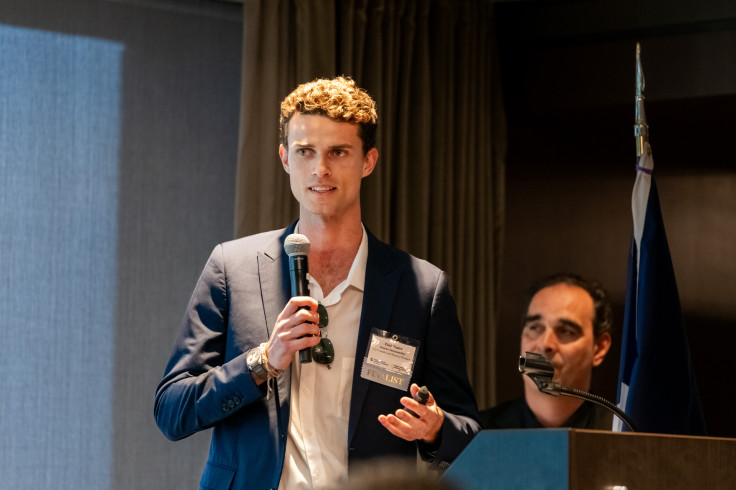From Microsoft to Palantir: How Abhigyan Khaund Designs Infrastructure Built to Withstand Failure
With experience across tech giants and research institutions, Abhigyan Khaund's journey reveals why resilience, reliability, and scale are critical to backend infrastructure design

Software infrastructures hum quietly in the background, delivering the speed and reliability we've come to expect in the modern world. But when those systems fail, the impact can be immediate and sometimes irreversible.
For systems-focused software engineer Abhigyan Khaund, failure isn't just a possibility; it's a constant consideration, design constraint, and professional focus. With experience at Microsoft, Meta, and now Palantir Technologies, he has built and maintained many backend systems designed to withstand stress, disruption, and the unpredictable conditions of real-world deployment.
Khaund's work centers on resilience, not as a reactive patch, but as a proactive engineering principle. 'I remember sitting in a design review at Palantir and someone asked, "What happens if this fails at 2 am while supporting a key customer activity?'" he recalls. 'That question hit me hard. This wasn't just backend code anymore. It was something people would rely on when they really couldn't afford for it to break.'
These are the types of challenges that keep him focused on delivering the secure and reliable software systems that he has worked on throughout his entire professional career.
From Research to Real-World Resilience: RD-FCA and the Origins of a Systems Mindset
Khaund's interest in infrastructure began during his school days, before he joined the teams building real-world operational infrastructure. While studying as an undergraduate at IIT Mandi, Khaund co-authored RD-FCA, the first fault-tolerant distributed framework for formal concept analysis (FCA), a technique used in knowledge discovery, recommendation engines, and document summarisation.
Traditional FCA approaches were designed for centralized computation and are challenging to parallelize. Their lack of inherent fault tolerance and poor scalability make them brittle in distributed environments. RD-FCA changed that by introducing asynchronous checkpointing, incremental state recovery, and two-tier dynamic load balancing, which meant it could withstand single-point, multi-point, and even cascading node failures.
These innovations didn't just make the system more reliable; they made it faster, and RD-FCA massively outperformed prior implementations. Khaund's research was published in the Journal of Parallel and Distributed Computing, a leading global journal in the field.
More than just an academic milestone, it marked the beginning of a philosophy that still shapes his work: Resilience isn't a nice-to-have; it's a foundational design constraint.
Lessons in Scale: What Microsoft Taught Him About Production Environments
After completing his undergraduate studies, Khaund joined Microsoft, where he worked on backend infrastructure for Microsoft Teams and Outlook. His role involved scaling backend services that were under constant load from millions of users.
One of his most impactful projects was the optimisation of Shared Channels onboarding, a high-scale synchronization process across multiple organizational domains. Sync behaviour was erratic, latency spikes for large organizations, and user experience suffered. So Khaund and his team redesigned the policy evaluation logic by implementing more efficient caching and asynchronous workflows, resulting in a massive reduction in response times.
This project taught him that even small architectural decisions at the backend can ripple across millions of users, and that speed, reliability, and consistency are not competing values, they must be engineered in tandem.
Building Infrastructure: The Quiet Complexity Behind Security-Critical Systems
Today, Khaund builds backend infrastructure that supports real-time coordination in complex, high-stakes environments. These systems are designed to deliver secure, consistent data streams across siloed organizations and operational domains, so they must scale horizontally, maintain data integrity, and remain functional even under degraded or adversarial conditions.
Most important platforms must function without relying on ideal conditions and system dependencies must remain robust, even when stressed by forces beyond the developer's control.
In this kind of systems work, failure isn't abstract, it's operational and it's visible, which is why Khaund approaches backend architecture not just as a builder but as a systems thinker focused on making sure those failures don't cascade.
A Thought Leader in the Systems Community: Bridging Engineering, Mentorship, and Vision

Khaund's influence extends beyond his own systems. He's known in global systems and open-source communities as a thoughtful contributor, mentor, and builder of resilient solutions.
During his time at IIT Mandi, he led the Programming Club and the Association for Computing Machinery (ACM) Student Chapter, where he organized workshops, hackathons, and formed new learning tracks in areas like machine learning and cybersecurity.
He has mentored participants in Google Summer of Code across multiple years (2019, 2020, 2025), taught deep learning as a graduate assistant at Georgia Tech, and judged international competitions in systems design and AI.
He's also published peer-reviewed research on distributed systems, deeplearning, and video recommendation engines.
The Road Ahead: AI at the Edge and the Infrastructure to Support It
Looking forward, Khaund believes the future of software resilience will be shaped not in the cloud, but at the edge. As AI becomes part of personal devices, localised networks, and embedded systems, the same principles of robustness will apply, just under tighter constraints.
He's currently involved in the model context protocol (MCP) community, a growing initiative to make AI systems modular, dynamic, and developer-friendly. The goal is similar to how APIs transformed web development by creating flexible building blocks that adapt across use cases.
'I've leaned into roles where the problems are messy but the impact is real,' he concludes. 'Whether it's working on distributed infrastructure at Palantir or designing ML systems to stop fraud at Meta, I've been drawn to projects where stability, clarity, and performance actually matter.'
His long-term goal is to make AI agents feel as dependable and responsive as traditional software. For Abhigyan Khaund, that's the future of infrastructure: Intelligent, resilient, and built close to the people who rely on it.
© Copyright IBTimes 2025. All rights reserved.




















